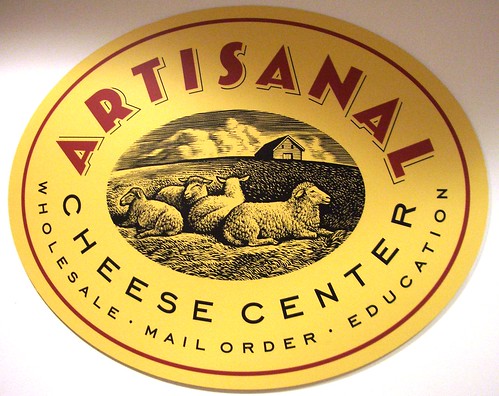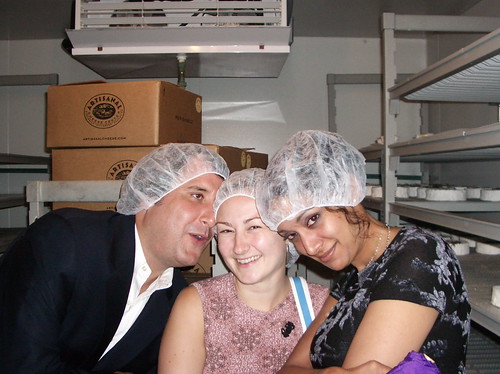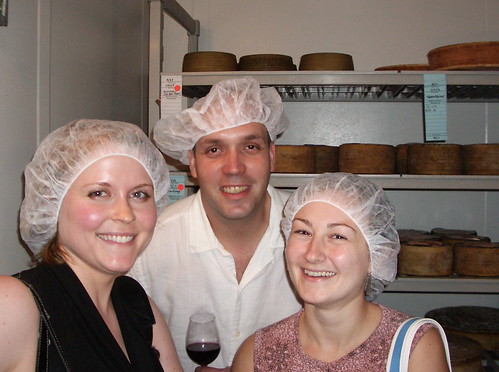It's All About The Cheese
I took a Cheese 101 class at the Artisanal cheese center in Manhattan two years ago with my friends Erica and Sumita. After that class I bought “The Cheese Plate” by Max McCalman, who led our course. He is the rock star fromager for all of the Terrance Brennan restaurants, including Artisanal. After our class was over, Erica was able to get us an exclusive tour of the cheese “caves” where the fromagers care for and age the famous artisanal offerings.
Last week, my friend Susan joined me for a French cheese class at Artisanal lead by Fromager Daphne Zepos. We were served a selection of French cheeses and given background information about each of the cheeses as she led the tasting. Even with my knowledge of cheese, the class was enlightening and delicious.
For example, did you know that while wine was always aristocratic fare, cheese was once considered a humble food? It began as a way to preserve the milk so that farmers could survive in the lean winter months (necessity is the mother of invention after all). The aristocracy and landowners would collect the more "ephemeral" cream and butter products and leave the cheese for the farmers. I also learned that women traditionally made goat’s milk cheese. Goats were considered of “the devil” and men didn’t have the patience to deal with the temperamental beasts. It therefore became the chore of the wife to take care of the goats. The residual effects of this can be seen in the small and delicate forms many goat cheeses take. It’s a woman’s imagination that ties little packages with such care.
When looking to pair cheese with food or beverages, ideally you find pairings that elevate the taste of each. Apparently sommeliers tend to recommend cheeses that will elevate the wine and some fromagers recommend wines that elevate the cheese. There are combinations however that can elevate both. For the yogis and others that avoid alcohol, you don’t have to feel left out; here is an article on how to use juices to the same effect.
While most cheeses are gluten free, I was concerned when I discovered that one of the cheeses on our plate was dusted with breadcrumbs. (Click on the photo to go through to Flickr and see which cheese is which.) I of course avoided the breadbasket placed on each table, but was pleased to learn that fromagers consider bread merely a palate cleanser. According to Daphne, bread hinders your ability to really taste the cheese and therefore should only be eaten between each cheese. So I was perfectly happy to use water as my palate cleanser and have an expert fromager give me an additional reason for banishing bread from my cheese services.
Cheese plates are a fun way to get creative with your palate with no actual cooking time. Let me know if you find some new favorites. (and Amber, we are going to find a Sheep's milk cheese for you!)






